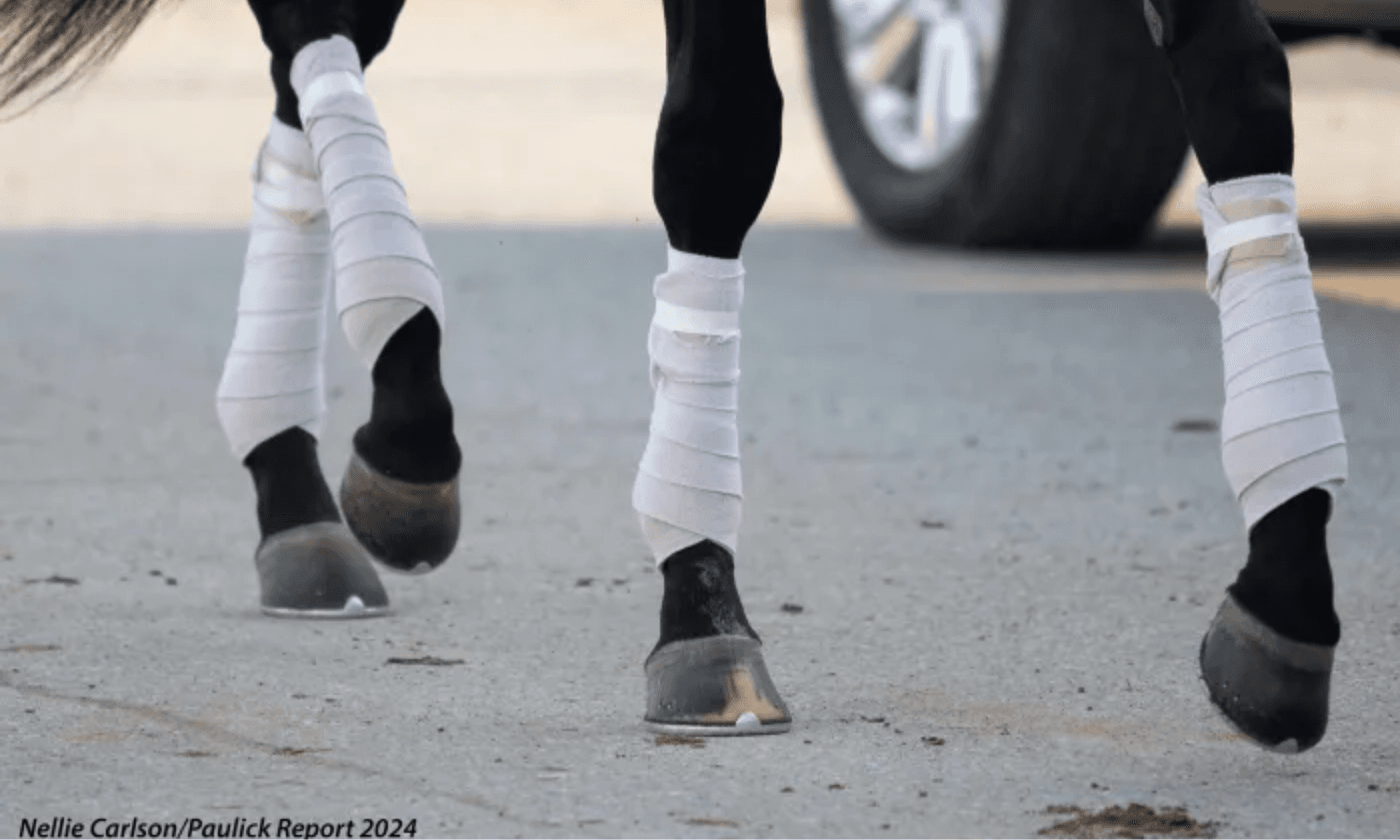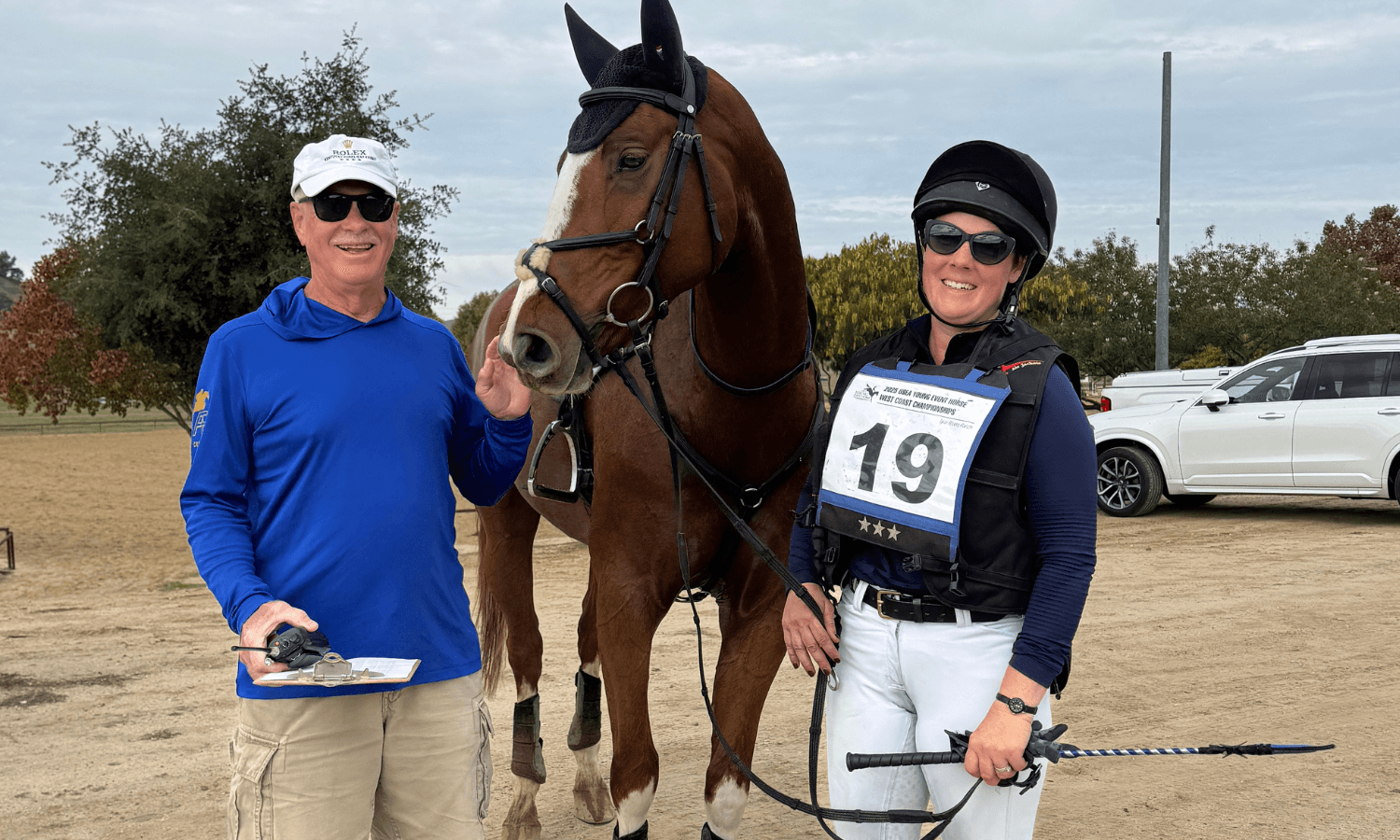Research In Action: A Stallside CT? The Day Could Be Coming

© Copyright 2024 Paulick Report/Blenheim Publishing. Reprinted With Permission.
The past few years have seen veterinary imaging for horses grow by leaps and bounds. Computed tomography (CT) and magnetic resonance imaging (MRI) were once rare and expensive luxuries for veterinarians trying to diagnose a horse, only accessible in a few places in the country. These days, more referral clinics are getting ahold of machines to bring advanced imaging closer to more people and horses. Some of these newer machines are faster and don’t require horses to undergo full anesthesia to get images.
The next wave, Dr. Chris Kawcak hopes, will be an even greater availability of CT in the form of a stallside machine.
CT uses X-rays to obtain a three-dimensional image of the body, and often looks at the body part it’s imaging in “slices” with greater detail of bones and some soft tissue than what radiographs can provide. (MRI, by contrast, also produces a series of three-dimensional images, but is more commonly used to study soft tissue rather than bone.) CTs can characterize the shape of bones, which is something radiographs can’t do well, and can also pick up smaller bone surface changes sooner than what a radiograph image does. As veterinarians and researchers constantly work to intervene before a racehorse’s subclinical injury becomes serious, that degree of detail can make a crucial difference.
Kawcak, who is a professor of orthopedics at Colorado State University, has been studying both CT and MRI for the past 30 years, looking for ways the technology can be used to help racehorses.
Even before the first CT robots arrived at the University of Pennsylvania, Kawcak was working on a small, portable CT that could take an image in 30 seconds. The way a lot of technology comes to the equine veterinary world is via human medical companies, and it’s not uncommon for a company to partner with a scientist on research but balk when it comes time to market a machine or drug when they realize how comparatively small the market for it is. This has happened with Kawcak’s stallside CT but now, he says, it’s back on track.
“We’re now at the stage where we’re designing three beta units that would then be distributed into equine clinics for further testing and optimization in preparation for a commercial unit,” said Kawcak.
It’s far from a done deal – to get something like this in the hands of veterinarians, the researchers and the tech company will have to not only be sure it works, but that the price point is feasible for practitioners, that tech support is solid, and that the images can practically be useful.
“Sometimes the science behind it is the easiest part,” he said.
While radiologists would prefer the super high-resolution images that come from giant machines, Kawcak said the stallside version he’s working on would use artificial intelligence to sharpen an image before it’s read based on the data the machine captured, giving the experts the quality they want from a small machine preferred by field veterinarians. It’s not like adding a filter to a photo before it goes on Instagram – the data is coming from what the CT saw.
“The data are real, and the research groups we work with – one is at Johns Hopkins and the other is at the University of Chicago – both of them are radiology physicists and so they know how to take that CT signal and better optimize it and read it and interpret it,” said Kawcak.
For technology like this to progress, of course, there have to be lots of layers of research verifying that everything works. Kawcak said the Grayson-Jockey Club Research Foundation has been instrumental in this process, helping fund a study he ran from 2018 to 2022 showing what the machine could do.
There’s more interesting research ahead – Kawcak said he’s working with a group from Johns Hopkins to use CT scanners to potentially develop predictive imaging biomarkers looking at bone density and joint shape in a horse’s fetlock to try to predict whether the horse has a higher than average risk of condylar or sesamoid fracture.
“We have some pretty strong evidence right now that we might be able to do that, but we won’t know definitively for a year,” he said.
A collaboration with Johns Hopkins on racehorse research may seem like an oddity, but Kawcak said it’s not.
“They really like animal research for animals, which impressed me when I first started working with them, they were super excited to understand the problem in horses and then try to deploy what they’ve developed to try to help animals,” Kawcak said.
It’s also true that while a lot of veterinary medicine comes from the human world, it can go the other way, too. This is called translational medicine, and it’s based on the idea that lots of things, including imaging, biomarkers, treatments, and therapies, can be defined in one species and then successfully applied to another. Johns Hopkins is interested in the racehorse project because they know that osteoarthritis in humans behaves similarly to the way it does with athletic horses, and are curious whether bone density and shape could be a factor in our risk of injury, too.
“Some people have claimed or want to claim that this will basically be a scanning method or survey method,” said Kawcak of people who have wondered aloud whether advanced imaging like CT could be done routinely, prophylactically. “I think it’s probably true, or at least that’s the hope, that we can better monitor the horses that are in training to try to identify a problem early on.”
That could be a double-edged sword – veterinarians have cautioned that the ability to take more detailed imaging always has to be paired with clinicians in the field, and their ability to interpret what they see during an exam alongside the images. Kawcak pointed to the CT scans that have been taken on horses to qualify for a start in the Melbourne Cup, which at times have yielded controversial scratches. A CT can’t always definitively declare whether a finding will be a problem, leaving people to sometimes hedge their bets and scratch a horse rather than risking an injury. Given the advancements in PET imaging and data aggregation and analysis in racehorse management, CT results become another piece of the puzzle to identify the horse at risk of injury – a very important piece, for sure.
“As we gain more and more information, we’ll have a better understanding of what some of those things really mean, to identify which horses are considered safe to continue and others where we need to take a step back,” said Kawcak.
Grayson-Jockey Club Research Foundation
Grayson-Jockey Club Research Foundation is traditionally the nation's leading source of private funding for equine medical research that benefits all breeds of horses. Since 1940, Grayson has provided nearly $42.3 million to underwrite more than 437 projects at 48 universities. Additional information about the foundation is available atgrayson-jockeyclub.org.














